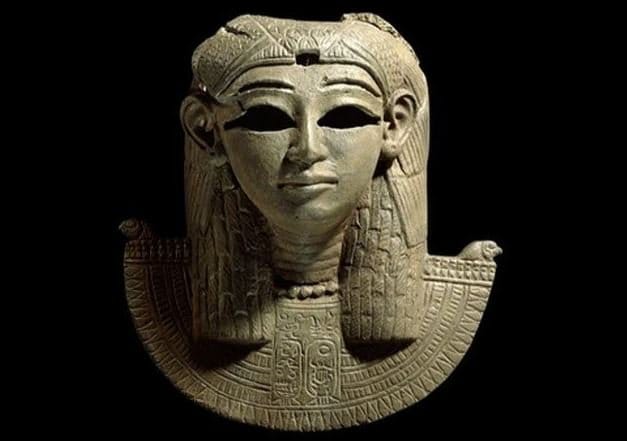Last updated on February 22nd, 2023 at 05:55 am
Roman history is full of striking female leaders who opposed Rome’s power. In Britain, for instance, Boudicca led a famous rebellion by the Iceni tribe against the Roman occupation of the south of England in 60 AD.
In the mid-third century AD, the Queen of the Palmyrene Empire, Zenobia, invaded the eastern provinces of the Roman Empire and was one of Rome’s most formidable enemies.
Long before Boudicca and Zenobia, Rome faced another formidable female opponent, one who is altogether less well-known today. This was Amanirenas, the late first century BC Queen of the Kingdom of Kush in Sudan.

Rome in the First Century BC
Context is vital to understanding the clash between the Romans and the Kushites under Amanirenas.
The Roman Republic was the dominant power in the Mediterranean world by the second half of the first century BC. However, many countries across the region were still ruled by client kings and queens who were effectively vassals of Rome.
One of these client states was Ptolemaic Egypt, ruled from 51 BC onwards by a female pharaoh, Cleopatra.
In the 40s and 30s BC, Cleopatra became involved first with Julius Caesar and then with one of his political successors, Mark Antony. Eventually, this ended badly, as Antony pulled Egypt into a new civil war within the Roman Republic for dominance between himself and Octavian, the adopted heir of Caesar.
Octavian defeated Antony and Cleopatra at the Battle of Actium in 31 BC, and they both took their own lives shortly after that. As a result, Octavian, who soon adopted the title Caesar Augustus and became Rome’s first emperor, annexed Egypt into the Roman Empire.
Consequently, by the early 20s BC, Roman garrisons were being established along the course of the River Nile and increasingly southwards towards what is now Sudan.
The Kingdom of Kush
In ancient times this region high up the River Nile was known as Nubia and Kush. Here the Kingdom of Kush emerged in the eighth century BC.
It gradually became more potent as Pharaonic Egypt went through a crisis and was dominated by foreign powers such as the Assyrians and Persians in the following centuries.
Soon a thriving Kushite culture emerged in the region, centered on the city of Meroe near modern-day Khartoum. This Kushite or Meroitic society remained vibrant and powerful through the establishment of Greek rule in Egypt in the fourth century.
It was still thriving three centuries later when the Romans replaced the Greeks along the lower Nile. Thus, the Romans’ new southern neighbor in the 20s BC was the Kushites or Meroites.
Kandake Becomes Queen of Kush
There was a long tradition of female rulers amongst the Meroites by the late first century BC. So when their king, Teriteqase, died in 25 BC, it was not unusual that his widow succeeded him as Kandake, the Kushite title for a queen.
This was Amanirenas, and she would soon lead the Kushites/Meroites to a famous victory over the Romans.
There had already been clashes between the Romans and the Kushites as early as 29 or 28 BC as the Romans moved south along the Nile.
The border between Pharaonic Egypt and the Kingdom of Kush had been fluid for centuries, often changing with political shifts, so it was not unusual that there were border tensions.
Fighting The Romans
However, when Amanirenas succeeded as Kandake of the Kushites, the new prefect or governor of Roman Egypt, Gaius Petronius, determined to invade Kush and attempt to seize much of the region for Rome.
According to the Greco-Roman geographer Strabo, who was a contemporary of these events, around 25 BC, Petronius advanced south as far as Napata, the southern-most point that the Pharaonic Kingdom of Egypt had ever extended as far as, but territory which in the mid-20s BC was part of the Kingdom of Kush.
Petronius’s efforts to conquer the northern parts of the Kingdom of Kush led to the campaign on which Amanirenas’s claim to fame rests.
In response to encroaching into her kingdom, the Kandake gathered a large army and headed north. In the following months, she succeeded in expelling Petronius and his Roman legionaries from Kush and occupying the southern parts of Roman Egypt.
Our details of this campaign are frustratingly limited, but Strabo briefly relates the campaign of a ‘fierce one-eyed queen’ who defeated the Romans in southern Egypt around 22 BC.
Making Peace with the Romans
This effectively brought the war between the Romans and the Meroites to an end and peace negotiations were entered into.
Thus, in either 21 or 20 BC, Emperor Augustus and Kandake Amanirenas agreed on a peace treaty. It was very favorable to the Meroites, with the northern border of the Kingdom of Kush fixed at Hiere Sycaminos, a dispensation that effectively ceded some disputed borderlands to Amanirenas.
Thus, the Kushite queen defeated a Roman invasion and won favorable peace terms. Moreover, this was a lasting agreement.
There would be no further conflict between Amanirenas and the Romans during her reign, which lasted until about 10 BC. Furthermore, the Kingdom of Kush remained independent on the southeastern border of the Roman Empire for centuries to come.
It appears that Emperor Nero, three-quarters of a century after the initial clash between the two nations, gave some consideration to conquering the Kingdom of Kush again, but this never materialized.
Consequently, the Meroites were one of the few people the Romans ever came into contact with that they never conquered. To a great extent, this was owing to Kandake Amanirenas, undoubtedly one of Rome’s most formidable adversaries.

